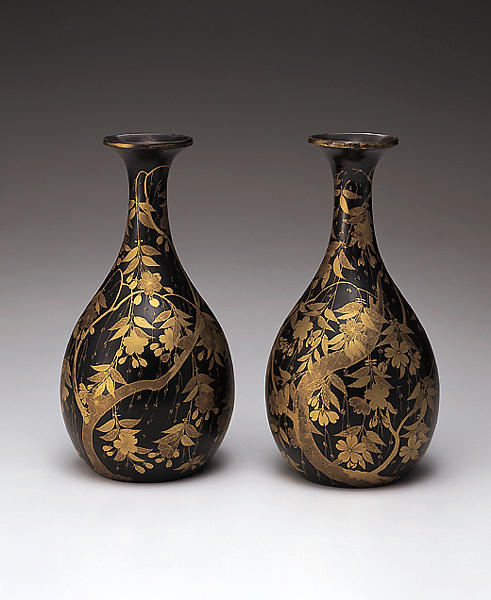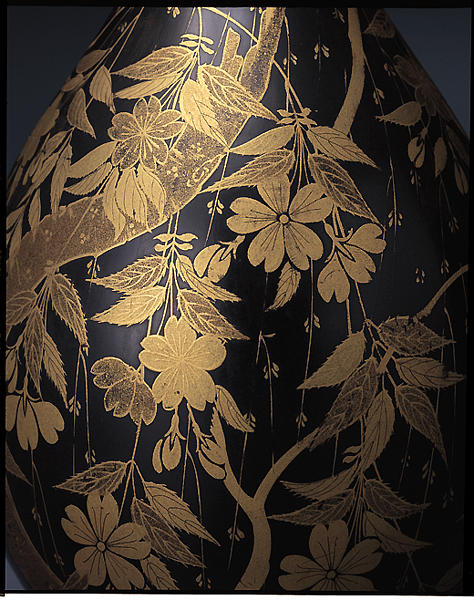Pair of Sake Bottles with Weeping Cherry Design
- Azuchi-Momoyama period, 16th century
- Maki-e lacquer on wood
- H-22.1 D-12
- Miho Museum
Catalogue Entry
Momoyama period, 16th century
Height, 22.1cm; mouth diameter, 5.7cm;
torso diameter 12.1cm
A pair of relatively small tokkuri jars. Uniquely Momoyama characteristics can be seen in the mouth rim which spreads at its extreme edge and the swelling form of the torso. Coated overall in black lacquer. Each is decorated with a single weeping cherry tree. Typical Kodaiji makie lacquer techniques are used, such as the superb use of gold hiramakie with an enashiji patterning and hari-gaki (a needle is used to draw lines in a wet makie surface) lacquer drawing technique. A close examination of this pair of tokkuri reveals that one shows an old cherry tree, while the other shows a young cherry tree.
The use of this kind of elaborate makie decoration on eating and drinking utensils began in the Momoyama period. This embellishment reflects the open atmosphere of Japan's pre-modern era. AH

